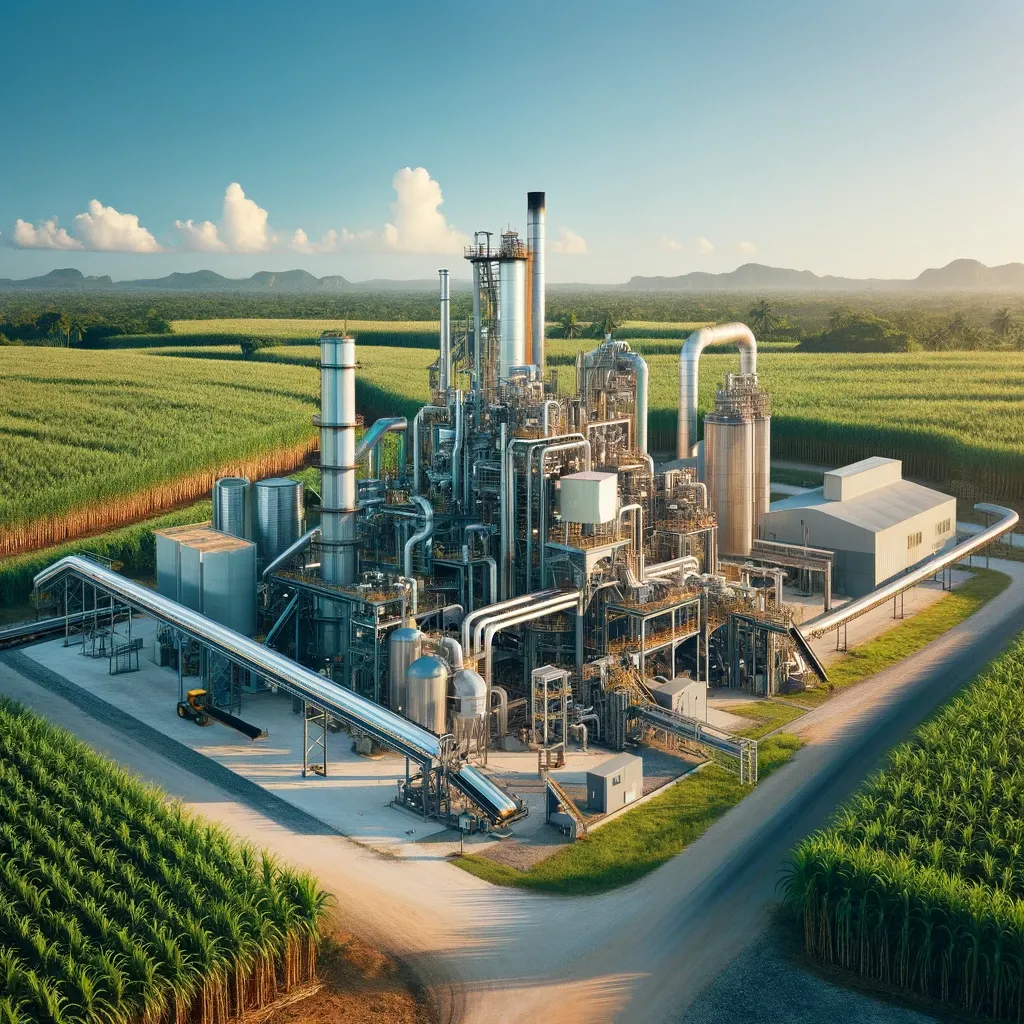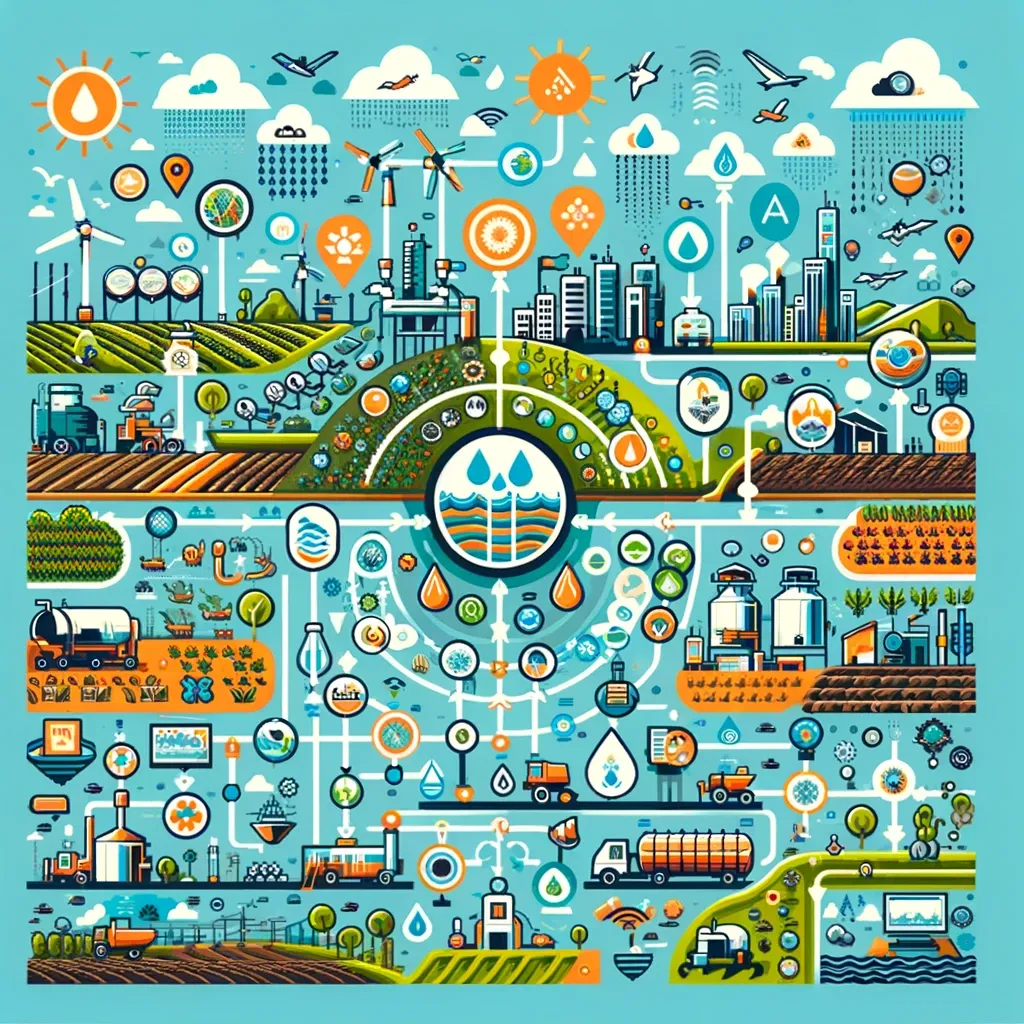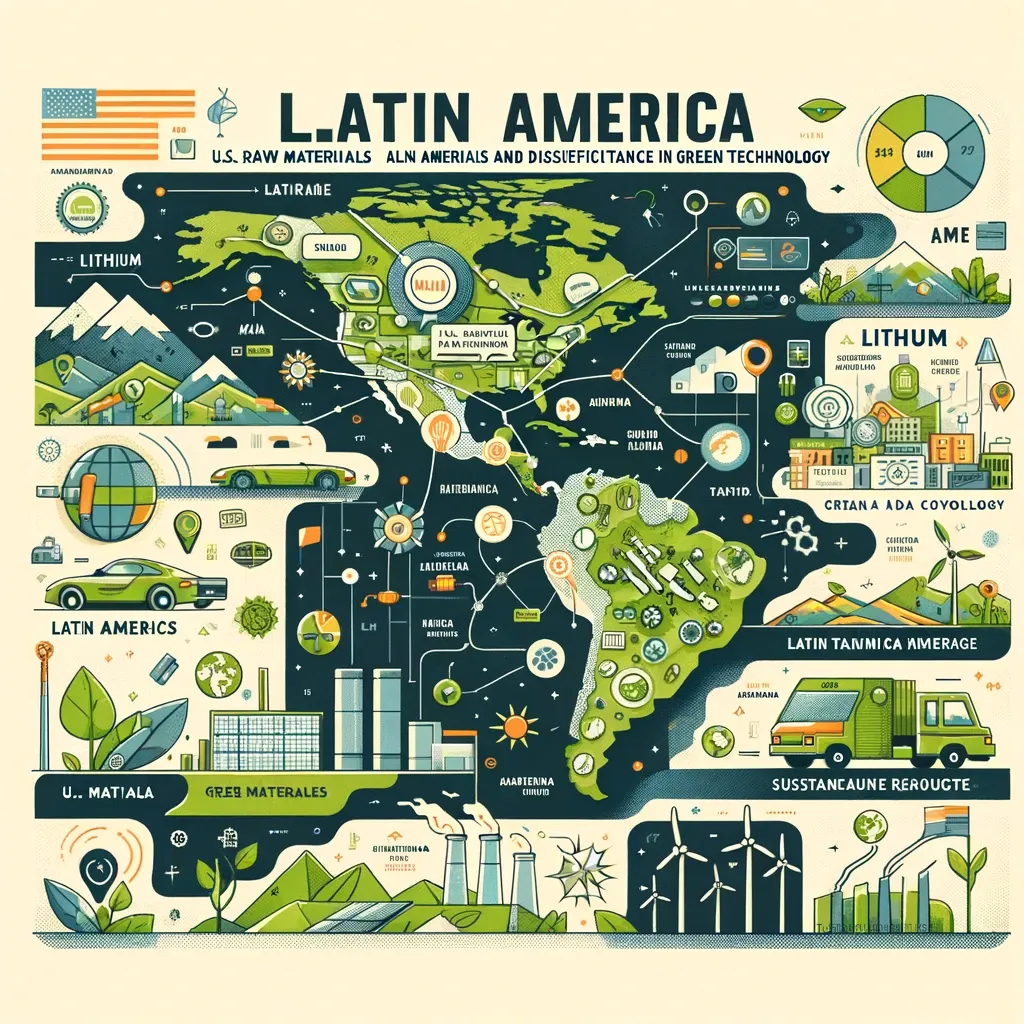Cuba's Biomass Energy Revolution: A Catalyst for Sustainable Growth and Stronger US-LATAM Relations
In the realm of renewable energy, Cuba's innovative pivot towards sugarcane biomass represents a beacon of sustainable economic boom and environmental progress. This venture not only exemplifies the rich potential of green technology but also underscores the pivotal role of US-LATAM collaboration in harnessing renewable energy for a sustainable future.

A modern bioenergy processing plant in Cuba, surrounded by lush sugarcane fields. The plant is equipped with advanced technology for converting sugarcane bagasse into bioenergy, illustrated with conveyors and processing units.
Introduction
The Caribbean island of Cuba stands on the brink of an energy transformation, leveraging its rich sugarcane heritage to pioneer a biomass energy revolution. This shift not only promises to redefine the landscape of renewable energy in Latin America but also to strengthen economic and environmental ties with the United States, presenting a unique opportunity for collaboration in the pursuit of sustainable growth and effective immigration control.
Revitalizing the Legacy of Sugarcane
Cuba's historical sugarcane industry is undergoing a transformative rebirth, leveraging centuries-old cultivation knowledge to fuel a renewable energy revolution. The conversion of sugarcane bagasse into biomass energy epitomizes sustainable innovation and showcases the operational efficiencies achievable through green energy technologies. The exploration will cover the intricate process, significant benefits, and vast potential of utilizing sugarcane biomass, positioning it as a fundamental component of renewable energy efforts within Latin America and a benchmark for worldwide sustainability initiatives..
Catalyzing Economic and Environmental Synergies
Cuba's initiatives in biomass energy are a prime example of how economic development and environmental preservation can go hand in hand. The shift towards using sugarcane biomass as a renewable energy source is set to drive sustainable economic growth throughout the Latin American region. This move not only aims to boost economic prospects but also strengthens US-LATAM trade relations by incorporating green technologies. Investing in renewable energy offers significant economic benefits, such as the opportunity to increase profit margins while concurrently advancing environmental stewardship.
Expanding US-LATAM Trade Relations through Green Investments
The strategic significance of US-LATAM partnerships in renewable energy projects transcends economic interests, paving the way for a future powered by sustainable practices. This collaboration, particularly in solar, wind, and biomass energy, is a testament to the shared commitment to cutting-edge green technology and sustainable economic growth. Here, the focus would be on the role of these partnerships in driving innovation, reducing operational costs, and promoting a shift towards renewable energy sources.
Unfortunately, due to longstanding economic sanctions and the complex political relationship between the two countries, currently the United States does not have direct investment in Cuba's green energy sector. However, Cuba has been actively seeking to develop its renewable energy resources, including the potential of sugarcane biomass, to address its energy challenges and environmental goals.
Cuba's energy sector relies heavily on oil-based thermoelectric generation, which has faced significant challenges due to aging infrastructure and lack of maintenance. Recent efforts to diversify Cuba's energy sources include liquefied natural gas (LNG) for electricity generation, which offers economic, environmental, and social benefits due to its lower pollution than oil or coal. Additionally, Cuba has explored the recapitalization of the sugarcane agro-industry to support biomass electricity generation, recognizing the economic benefits of new capital investment, job creation, and the potential to reduce demand for imported oil.
Cuba's initiatives to increase its electricity generation capacity, including projects for thermal generation capacity and wind farms, have faced challenges such as a lack of management skills, minimal financing, and complex bureaucracy. Despite these obstacles, a notable project is constructing a biomass plant adjacent to the Ciro Redondo sugar mill, which began in 2017 with the support of the Chinese company Shanghai Electric. However, it has operated intermittently due to a lack of biomass.
The United Nations has been involved in supporting Cuba's sustainable development, notably through the Integrated National Financing Framework (INFF), which aims to boost sustainable development by aligning different sources of financing. This initiative reflects a collaborative approach to addressing Cuba's development challenges, including its energy sector, despite its exclusion from international financial mechanisms.
While the United States may not be directly investing in Cuba's renewable energy initiatives, the global push towards sustainable development and the involvement of international organizations suggest there are opportunities for Cuba to further develop its renewable energy resources within the constraints of its current economic and political context. The efforts towards developing sustainable energy sources, including sugarcane biomass, are part of a broader agenda to modernize Cuba's energy sector and contribute to its economic and environmental goals.
Overcoming Challenges Through Innovation and Collaboration
While the path to a fully sustainable energy sector is challenging, the Cuba case study reveals many opportunities for overcoming these obstacles through innovation, investment, and international cooperation. This exploration will cover the variety of challenges that biomass energy initiatives encounter, including technical complexities, financial constraints, and regulatory issues. It will emphasize the potential role of collaborative efforts between the United States and Latin American countries in overcoming these obstacles, thereby creating a supportive framework for sustainable development and economic stability.
A Vision for Sustainable Growth and Reduced Immigration
The broader implications of Cuba's shift towards biomass energy extend beyond solar and wind energy as drivers of sustainability, touching on vital issues such as economic stability and immigration. By creating jobs and stimulating economic growth through renewable energy, the US-LATAM trade relations and partnerships can significantly reduce illegal immigration, offering a model of how green technology can address complex social challenges.

The interior of a sugarcane bioenergy plant in Cuba. It features workers operating advanced machinery for processing sugarcane bagasse into bioenergy. The scene includes conveyors, large processing tanks, and control panels, highlighting both the technology and the workforce involved in this sustainable energy endeavor.
Conclusion: Shaping a Sustainable Future Together
Cuba's journey towards harnessing sugarcane biomass energy illustrates the profound impact of renewable energy on fostering sustainable economic growth, environmental conservation, and more robust international relations. As Cuba continues to innovate and invest in green technologies, the promise of a sustainable, prosperous future becomes increasingly tangible, setting a precedent for global renewable energy initiatives.
=====
Did you know?
Did you know that U.S. SMEs can deploy AI Marketing in creative ways to navigate and engage with Cuba's sugarcane biomass energy sector? Given the unique digital and economic landscape in Cuba, these strategies need to be particularly insightful and innovative.
- Data-Driven Insights on Agricultural Trends: U.S. SMEs can use AI to analyze satellite imagery and agricultural data to understand sugarcane production patterns in Cuba. This information is vital for SMEs looking to propose biomass solutions tailored to regional characteristics. For instance, AI analysis might reveal high-yield sugarcane areas where biomass energy conversion could be most effective, allowing SMEs to focus their outreach and resource allocation.
- Offline Digital Content Strategies: Recognizing the limited internet access in Cuba, U.S. SMEs can use AI to create compelling digital content (such as informative videos or interactive presentations about biomass energy) that can be distributed via El Paquete Semanal. This approach ensures that educational and promotional materials reach a wider audience, even in areas with restricted online access.
- Localized Educational Campaigns: AI can assist in developing educational campaigns that are culturally and contextually relevant to Cuba. For example, AI tools can analyze local media consumption habits to create tailored content that explains the benefits of sugarcane biomass energy, focusing on aspects like job creation, energy independence, and sustainable agricultural practices.
- Network Analysis for Partnership Building: While platforms like LinkedIn might have limited reach in Cuba, AI can still be utilized to analyze potential partnership networks. This could involve identifying key stakeholders and influencers within the Cuban renewable energy sector through international conferences, renewable energy forums, or collaborations with Cuban academic institutions.
- Customized B2B Marketing Materials: Given the specificity of the Cuban market, AI can help create highly customized marketing materials. These materials can address the unique challenges and opportunities in Cuba's renewable energy sector, crafted to appeal to government bodies, local enterprises, and international agencies involved in Cuban energy projects.
- Adapting to Regulatory Landscapes: AI can be instrumental in helping U.S. SMEs navigate Cuba's regulatory environment. By analyzing policy documents and regulatory updates, SMEs can adapt their marketing and business strategies to comply with Cuban laws and regulations, showcasing their commitment to being reliable and informed partners.





























